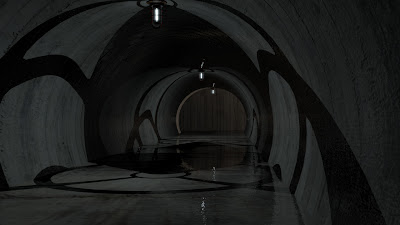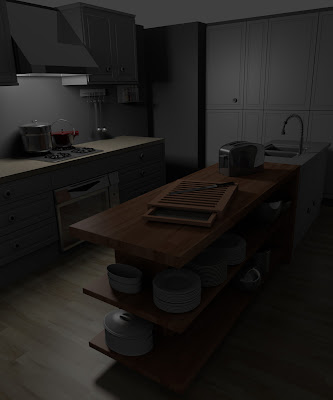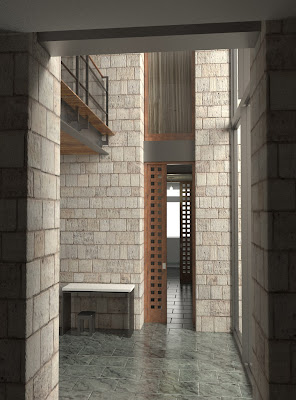6 Days in December is the steamy paranormal romance zombie...
{read more}
...apocalypse rabies-sex movie recently announced by newly united writing trio Christine Feehan, Cecily von Ziegesar and Michael Bay.
A series of mysterious, slow-motion plane crashes in the Rocky Mountains has left thousands of Texas housewives in turn-of-the-century gowns with no oily-chested rogues to screw in the stables, and an army of sex-hungry vampire brides descends on the crash sites where the victims have become baby robot zombies through a chemical interaction with the plane's smoking fuselage. Meanwhile our hero and his sweetie are mere miles away in an isolated cabin supplied with only the necessary birth control, cakes, and military-grade explosives.
von Ziegesar: "Basically we've taken Jane Smiley's Ten Days in the Hills, and turned it into something people want to see."
So you kept the sex.
"Right. Plus some vampires, haughty girls, machine guns. Some kind of plague? Dunno. My job was the bitches."
The most intriguing part of 6 Days is the introduction of a new theater technology championed by Michael Bay. He calls it AntethInc. We caught up with Mr. Bay at an Adidam colony in Bermuda and he graciously agreed to an interview. {Continued in MOVIES: HILARY HAHN IN THE HILLS}
A series of mysterious, slow-motion plane crashes in the Rocky Mountains has left thousands of Texas housewives in turn-of-the-century gowns with no oily-chested rogues to screw in the stables, and an army of sex-hungry vampire brides descends on the crash sites where the victims have become baby robot zombies through a chemical interaction with the plane's smoking fuselage. Meanwhile our hero and his sweetie are mere miles away in an isolated cabin supplied with only the necessary birth control, cakes, and military-grade explosives.
von Ziegesar: "Basically we've taken Jane Smiley's Ten Days in the Hills, and turned it into something people want to see."
So you kept the sex.
"Right. Plus some vampires, haughty girls, machine guns. Some kind of plague? Dunno. My job was the bitches."
The most intriguing part of 6 Days is the introduction of a new theater technology championed by Michael Bay. He calls it AntethInc. We caught up with Mr. Bay at an Adidam colony in Bermuda and he graciously agreed to an interview. {Continued in MOVIES: HILARY HAHN IN THE HILLS}
_____________________________________________
MODELING THE HUMAN FIGURE
December 6th is my birthday. This last winter, I gave myself a present. For the first week of December, I modeled the human body. Every waking hour. I rose early, and stayed up into the tiny hours. Remember to eat. I slept little."Blenederella" is a DVD tutorial by Angela Gannette. 40 hours of screencast are condensed to 8 hours of video with timelapse and voice over. She models directly from reference images.
I'm not an artist. I am learning to see in the reverse order: surface normal, tension, line, cheek. I practice seeing, and I will learn to draw. Angela Guenette's approach was perfect for me: she is a subdivision vert-pusher.
It is not designed to teach anatomy or subdivision modeling. It is for artists. I used it to learn anatomy and organic subdivision modeling anyway. Everything was new. Time-lapse meant "...and so on," for the knowledgeable artist. I have no such knowledge; I copied the time-lapse, vert-by-vert. The video for the hand is 20 minutes long. I spent over a day with it. Often, I would advance through a few seconds of footage in an hour.
The DVD includes the finished model. I examined it three times, for details not clear in the videos. I did not use it as to place vertices, I borrowed no geometry. I only corrected what I could see.
It is not designed to teach anatomy or subdivision modeling. It is for artists. I used it to learn anatomy and organic subdivision modeling anyway. Everything was new. Time-lapse meant "...and so on," for the knowledgeable artist. I have no such knowledge; I copied the time-lapse, vert-by-vert. The video for the hand is 20 minutes long. I spent over a day with it. Often, I would advance through a few seconds of footage in an hour.
The DVD includes the finished model. I examined it three times, for details not clear in the videos. I did not use it as to place vertices, I borrowed no geometry. I only corrected what I could see.
Thursday, December 1
Friday, December 2
Prepare the reference images: front, side, back, 3/4 profiles. Align them in Photoshop: match height and body positions. Friday, December 2
Begin with the eyes. Raccoon mask face, the bridge of the nose, trailing off at the cheeks. Eyes. Eyelids. The socket. Eyeball.
It took me three days to complete the face. It was nothing like hard surfaces. Thursday, on just the eye and socket. Each new form caused me trouble. The transition from the eye socket to the forehead is my mortal enemy. We fight in space.
End of Day 2
Saturday, December 3
The chronology is off. I must have started on the last day of November. I spent three days on the head. And I spent Saturday on the ear.
I was thoroughly vexed three times: the ear, the elbow and the hand. All Saturday, the ear. Perhaps sixteen hours. The ear is compact, folded, and thin. I screwed it up. Some subdivision mistakes can escalate. I made them. Fixed it. Screwed it up again. When I moved verts enough change the shape, my mesh became unruly. I had made a mess of the base geometry.
Irreparable.
No.
I almost gave up, which made me angry and I reworked the entire ear. I talked to myself.
Why is it doing that?
Because you're telling it to. Ask a better question.
Damnit! Okay. Think. Describe what is going wrong. Describe how you want it to change. Look at your geometry. What do you need to fix?
Here is a consistent strain. The most difficult obstacles, which caused me the most doubt and fear have been those of which, when overcome, I am most proud. Not because I did it. I look back, and it is my best work.
Sunday, December 4
Now I was worried I wouldn't finish by my birthday. I planned it out, set limits for the amount of time I could fiddle with a problem.
The torso. Here I learned the most about human form. After building a rough cage, she added guides along the body.
Guide lines of the body; shaping the shoulders
Orthographic and perspective views
I spent most of my time with two viewports: orthographic on the left, with reference image. Perspective on the right, shaping the body in space, and adding detail. The back is shaped with few vertices: Guenette described each adjustment, the bones and muscles she was following. I want more than ever to learn anatomy; to draw.
This is when I started to understand what can be done with subdivision. When I removed the guides, I was stunned. Even my mistaken placement, causing an extra, odd bulge, shows clearly as if the musculature and bone were there.
Monday, December 5
The elbow caused me no end of trouble: I never got it right. To move on, I promised myself a return visit, with pencil, paper, and anatomy books.Okay, look. I knew the hand would be hard. I had plenty of warning. Artists tell stories about hands. And I work with my hands. About the motion of fingers, I have a very good idea of the difficulties. I still had no idea how hard it would be to model.
First go at the hand
The first hand. I didn't like what I was building. My lines were wrong and I wanted more detail. My tendons looked like metal rods. So I started again. Her fingers, I left the same as here. But I deleted the palm, turned my hand over, and worked it out, using the muscles and creases of skin as guides.
Tuesday, December 6
I stitched the wrist to the rest of the body on my birthday.
Of all my 3D work, I am most proud of this hand.
Test render of the final mesh
Follow-Up: Hair, Clothes
Rigging and Animation
After that, there is still a lot to do before I have a Snow Queen. Clothing is altogether a new matter. What I intend, I have never seen.
A Promise
205 left to go.
■
__________________________________
{PARANORMAL ROMANCE cont'd - read more}
R: How's Adidam treating you?
M.Bay: {grimaces} Too much Bulgar wheat. Where are the goddamn spaceships?
R: ...sssspace?
MB: Astral messiah my ass. The little fat guy over there keeps painting himself like an Asian and trying to pork my wife.
R: So we've heard rumors about "Six Days in December."
MB: Well, first of all it's "6" Days in December. And second, it's the first ever AntethInc movie.
R: And what exactly is AnteThink?
MB: It's post-thought. The evolution of story to its highest form. In a post-thought world your brain can stop completely. No message. Just 102 minutes of Hilary Hahn's bare ass, brainthirsty-
R: Wait... Hilary Hahn?
MB: -zombies, and giant robots. And, yes.
R: The violinist?
MB: The what?
R: Violinist
MB: Ungaramist!
R: .... curly hair?
MB: Vagosaurus!
R: ...plays Bach like the sky is
MB: Paleidobak! BOOM!
R: -trying to spea-
MB: AERODROME!
R: CHACONNE!
MB: ROBOTS. Giant fucking robots. Giant robots, fucking. Bigger-Than-A-House-bots. Zomboloid Bots. Talking robots that talk. Talkybots. They say, 'BOOM', and 'POW', and they run on energy, but mostly blow things up. They're made out of babies I mean zombies. They're made out energy fucking zombie babies. It's cold and they kill shit and the zombies spread rabies by infecting the robots with spores. It is the greatest thing I have-
R: Um. You were saying about AntethInc-?
MB: ever done. Yes. Right. For one hundred two straight minutes you will not think at all. We're passionate about this goal. Thinking will cause you pain. Before, I would have said, No, that's not possible. But after meeting Ms. von Ziegesar...... well..... she opened my eyes to a whole new world. 102 minutes of ass.
R: ....Hilary Hahn?
MB: Yeah.
R: ...the violinist.
MB: Flabbelotist? Magzamanist? Speak English. Stop wasting my time. I order you to stop thinking.
____________
Ed: ...The Violinist.
Try on the Bach Chaconne.
M.Bay: {grimaces} Too much Bulgar wheat. Where are the goddamn spaceships?
R: ...sssspace?
MB: Astral messiah my ass. The little fat guy over there keeps painting himself like an Asian and trying to pork my wife.
R: So we've heard rumors about "Six Days in December."
MB: Well, first of all it's "6" Days in December. And second, it's the first ever AntethInc movie.
R: And what exactly is AnteThink?
MB: It's post-thought. The evolution of story to its highest form. In a post-thought world your brain can stop completely. No message. Just 102 minutes of Hilary Hahn's bare ass, brainthirsty-
R: Wait... Hilary Hahn?
MB: -zombies, and giant robots. And, yes.
R: The violinist?
MB: The what?
R: Violinist
MB: Ungaramist!
R: .... curly hair?
MB: Vagosaurus!
R: ...plays Bach like the sky is
MB: Paleidobak! BOOM!
R: -trying to spea-
MB: AERODROME!
R: CHACONNE!
MB: ROBOTS. Giant fucking robots. Giant robots, fucking. Bigger-Than-A-House-bots. Zomboloid Bots. Talking robots that talk. Talkybots. They say, 'BOOM', and 'POW', and they run on energy, but mostly blow things up. They're made out of babies I mean zombies. They're made out energy fucking zombie babies. It's cold and they kill shit and the zombies spread rabies by infecting the robots with spores. It is the greatest thing I have-
R: Um. You were saying about AntethInc-?
MB: ever done. Yes. Right. For one hundred two straight minutes you will not think at all. We're passionate about this goal. Thinking will cause you pain. Before, I would have said, No, that's not possible. But after meeting Ms. von Ziegesar...... well..... she opened my eyes to a whole new world. 102 minutes of ass.
R: ....Hilary Hahn?
MB: Yeah.
R: ...the violinist.
MB: Flabbelotist? Magzamanist? Speak English. Stop wasting my time. I order you to stop thinking.
____________
Ed: ...The Violinist.
Try on the Bach Chaconne.
























Phi_1.jpg)
Phi_2.jpg)